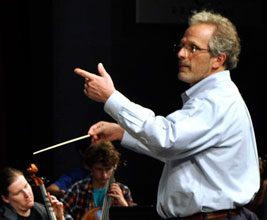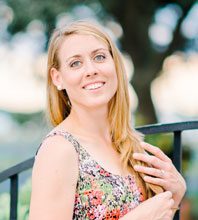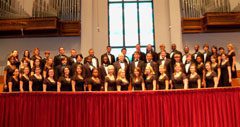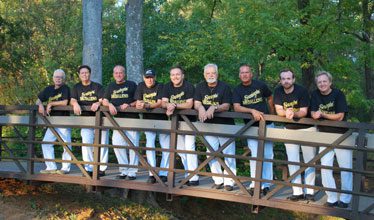 “Let’s Dance!” says the Beaufort Symphony Orchestra, inviting you to its final concert of the season on May 7 and 10.
“Let’s Dance!” says the Beaufort Symphony Orchestra, inviting you to its final concert of the season on May 7 and 10.
From the waltz, to ballet, to Broadway, the Beaufort Symphony Orchestra and Maestro Frederick Devyatkin will set your toes tapping in their lively musical tour of dances from around the world at the season’s last performances on May 7 and 10.
Russian composer Alexander Borodin begins the tour with the Polovetsian Dances from the opera, “Prince Igor,” composed in 1890. It was chosen to open the 2014 Winter Olympics in Sochi, and audiences will recognize one of the musical themes that was incorporated into “Stranger in Paradise” from the hit Broadway musical “Kismet.”
A dance of death is the theme of “Danse Macabre” by French composer Camille Saint-Saens. Once a year “death” appears at midnight and calls the dead from their graves to dance for him. At dawn they must return to the ground for another year. In the piece the xylophone imitates the sounds of the skeletons’ rattling bones.
“The Sleeping Beauty Suite” was extracted from Peter Tchaikovsky’s “Sleeping Beauty” opera which premiered in St. Petersburg in 1890. He could not decide which of his works were the best so the suite was not realized during his lifetime. Several years after his death in 1893, a selection of five numbers was made and published as “Opus 66a.”
The most famous waltz ever written is “By the Beautiful Blue Danube opus 314” composed by Johann Strauss the Younger, nicknamed “King of the Waltz” by his peers. Adapted for the World’s Fair in Paris in 1867 one year after its debut, the piece is not one waltz but a chain of five interlinked waltz themes.
Another classic waltz is the “Gold and Silver Waltz” by Hungarian composer Franz Lehar who wrote it for Princess Pauline von Metternich’s Gold and Silver Ball in 1902. Lehar’s best known work is the operetta “The Merry Widow.”
The contemporary program begins with a medley of songs from John Kander’s hit Broadway musical and movie, “Chicago” arranged by Victor Lopey. The comedy opened in 1975 and explores the themes of celebrity, scandal and corruption in Jazz Age Chicago. A few of the most popular songs include “All That Jazz” and “Razzle Dazzle.”
Aaron Copeland wrote his American ballet “Rodeo” in 1942, and soon after arranged four dance episodes from the ballet into an orchestral suite he called “Hoe-down,” after a type of American folk dance. His contemporary ballet was inspired by Kentucky musician and fiddler Bill Stepp’s performance of “Bonaparte’s Retreat.”
No concert of dance music would be complete without a nod to George Gershwin and his 1928 classic, “An American in Paris.” The composition is a jazz-influenced symphonic poem and a wonderful display of his rich and evocative orchestral writing. The finale suite was originally 17 minutes long but edited down to a more suitable concert program length by arranger John Whitney.
So take the BSO up on the invitation and attend “Let’s Dance” at 7:30 pm on Thursday, May 7, and 4 pm on Sunday, May 10. Adult and Senior tickets are $37.50 and Students $5 at the door or go to the website at www.beaufortorchestra.org or www.TIX.com or call 1-800-595-4849. A map with directions to the concert venue, Sea Island Presbyterian Church on Lady’s Island is also on the website.
This concert is funded in part by the South Carolina Arts Commission which receives support from the National Endowment for the Arts.







